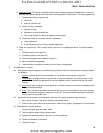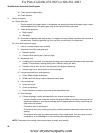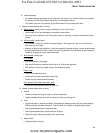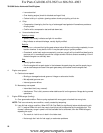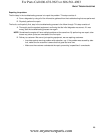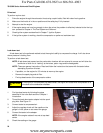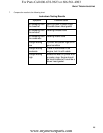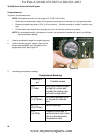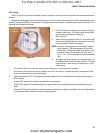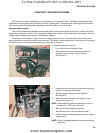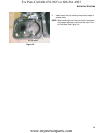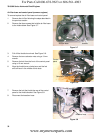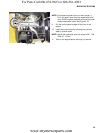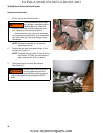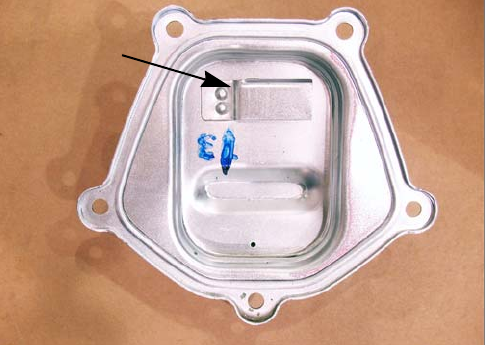
BASIC TROUBLESHOOTING
27
PCV testing
The PCV (Positive Crankcase Ventilation) valve is located in the valve cover and allows the crankcase pressure to
escape.
Leakage and blockage are the two failure modes for a PCV system. Either mode will cause crankcase pressure to
build-up, though the effects of a blocked PCV are generally more dramatic. Increased case pressure will result in oil
entering the combustion chamber.
1. The PCV chamber is vented to the heat box through a
molded rubber hose. The rubber hose directs crank
-
case fumes to the heat box assembly.
See Figure 2.3.
2. When functioning properly, the PCV valve works with
the inherent pumping action of the piston in the bore
to expel pressure from the crankcase.
NOTE: Normally, small engines run with slightly negative
case pressure. This case pressure can be mea
-
sured using a slack-tube water manometer, or an
electronic version of the same tool. Less than -3”
to -4” (-7.6 - 10.2cm) of water is a typical reading at
idle.
3. An engine that fails to purge extra case pressure in a
controlled manner will build case pressure. The pres
-
sure will find it’s own way out of the engine in unde-
sirable ways.
• Oil will be forced by the rings and valve guides, being burnt in the combustion chamber.
• The cause of this oil burning can be mistaken for a worn-out engine, if proper diagnosis (compression, leak-
down, and case pressure) is not performed.
4. Experimentation by MTD’s Training and Education Department has revealed the following characteristics of
MTD engines:
• A leaky PCV system will not build-up substantial case pressure.
• A leaky PCV system will allow the engine to ingest contaminants through the system, accelerating engine
wear.
• A blocked PCV system will allow crankcase pressure to build very rapidly. Noticeable oil fumes will be evident
in the exhaust within several minutes of normal operation.
Figure 2.3
crankcase
air chamber
For Parts Call 606-678-9623 or 606-561-4983
www.mymowerparts.com



